Innovative Technology Offers Non-Invasive, Efficient Way to Monitor Fish Populations and Their Habitat
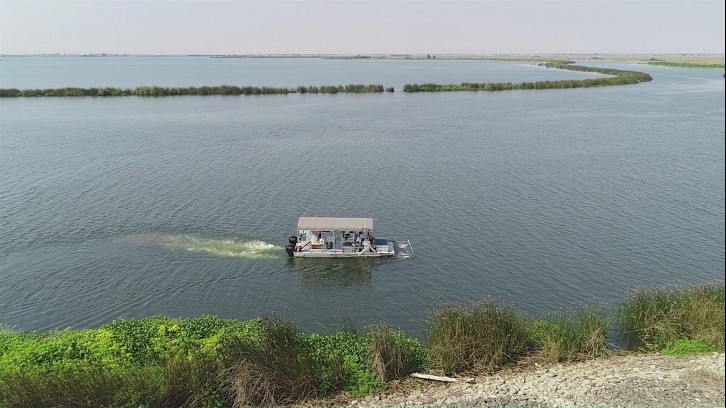 The Platform monitoring Delta waters (Cramer Fish Sciences Photo)
The Platform monitoring Delta waters (Cramer Fish Sciences Photo)
In an ecosystem as complex and altered as the Sacramento-San Joaquin Delta, determining the abundance and distribution of native fish populations is a challenging undertaking.
Enter the Single-Platform Aquatic Species and Habitat Sampling System, or simply the Platform. Crafted from a reconfigured pontoon boat, the Platform provides a non-invasive way to monitor sensitive fish species without having to capture and handle them.
“The Platform can collect streaming images and associate them with environmental parameters in space and time, reducing take during estuary studies … and complementing existing monitoring efforts,” said Joe Merz, president and principal scientist with Cramer Fish Sciences in West Sacramento, during a recent online presentation.
The idea for the Platform emerged to improve our sampling methods for gathering data from shoals, shallow, heavily vegetated intertidal areas, and subtidal habitat, Merz said.
Perched atop pontoons, the Platform skims across the water, funneling fish with a forward net that guides fish to a “live box” equipped with stereo video cameras in the middle of the boat. Merz said the ability to tease out an individual fish from vegetation and other objects moving through the live box has improved dramatically.
The Platform samples in open water and remarkably shallow water and can vividly capture a snapshot of a given moment – an important asset in monitoring data for Delta smelt and other sensitive species. Fish images are time-stamped and can be associated with water quality data that is also time-stamped with a specific location, improving the ability to refine fish/habitat associations.
Several years ago, Merz and his colleagues sketched the rudimentary idea of the Platform and thanks to funding from Reclamation, the $50,000 boat was ready to start sampling.
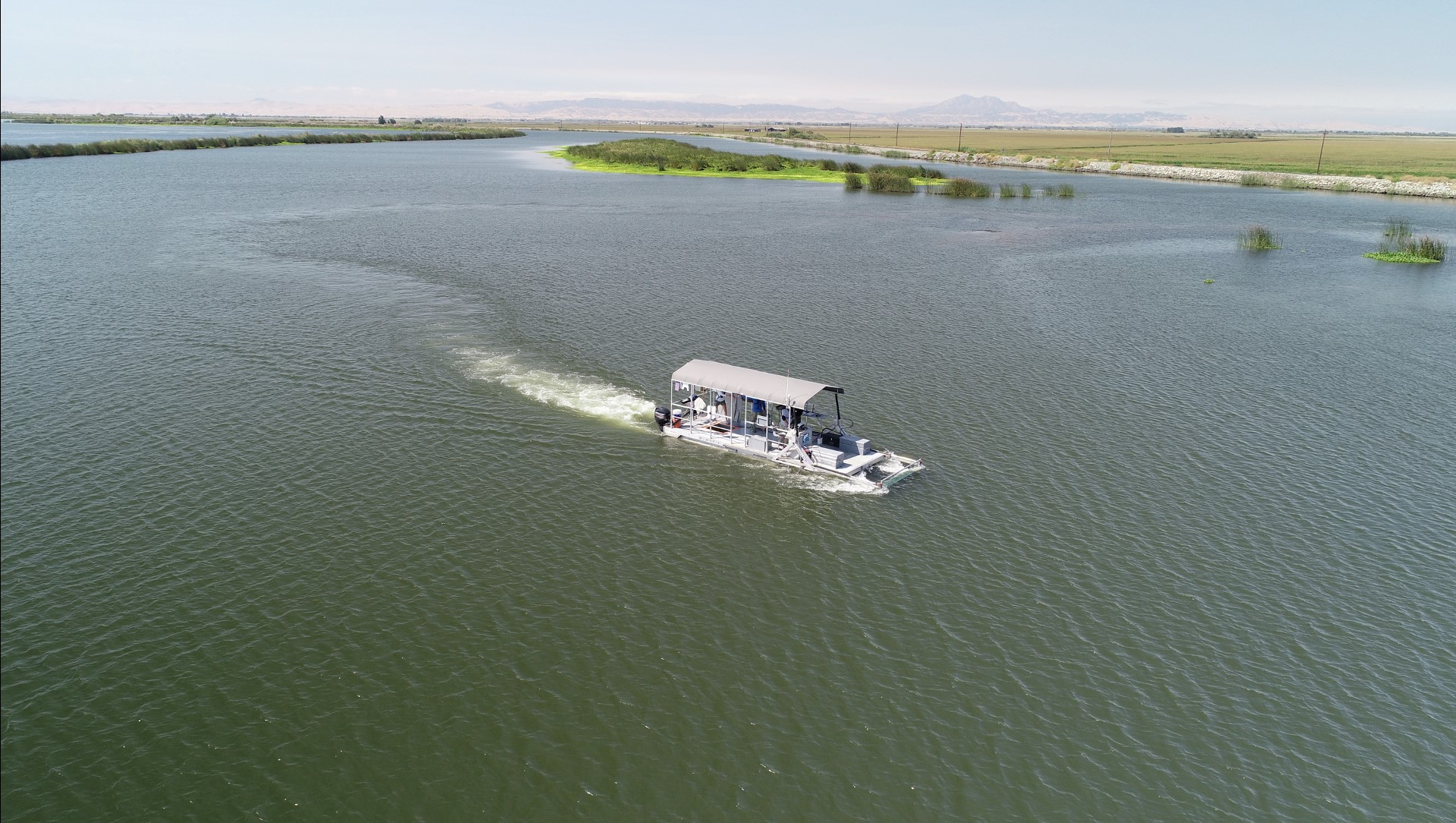
The Platform can benefit Reclamation’s activities by complementing real-time monitoring that informs Delta Cross Channel gate operations and export pumping, supporting special studies in areas used by endangered fish, and documenting the performance of tidal wetland and other fish habitat restoration projects, said Reclamation fish biologist Erwin Van Nieuwenhuyse.
“The Platform images are recorded in real-time, meaning fish can be associated more closely with specific environmental parameters such as temperature, salinity, and chlorophyll concentration, all of which are being simultaneously measured and recorded, he said. “For instance, in a trawl, it is unclear where along a 20-minute transect fish were actually collected.”
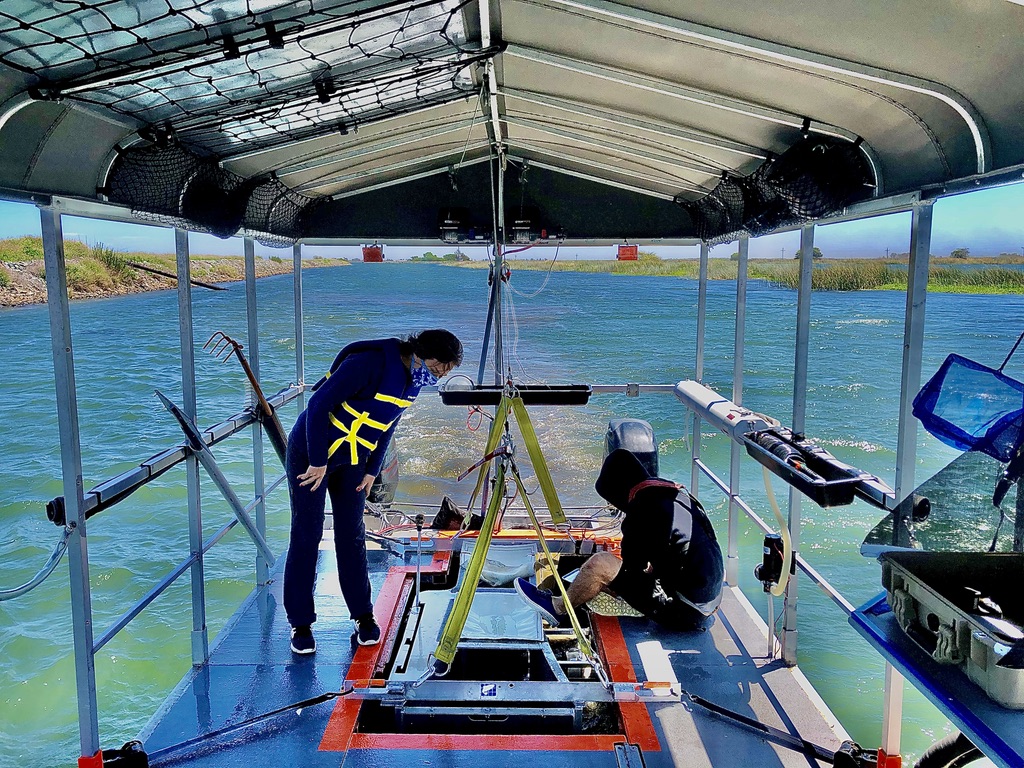
While the Platform’s push net and live box operation are pretty much perfected, improvements in camera technology are still needed to be able to detect fish in the Delta’s murkiest waters. Another area for improvement, Van Nieuwenhuyse said, is training computers to detect and identify specific fish and zooplankton, the microorganisms that are a key part of the estuary’s food chain.
“If all the fish surveys included taking photographs of their catch and uploading them to a central web site, artificial intelligence could be used to store images and continually compare them to newly uploaded images in what would amount to a continuous mark-recapture experiment that would allow us to infer population density, biomass and distribution,” said Van Nieuwenhuyse. “It’s ambitious but doable with the right combination of expertise and resources.”
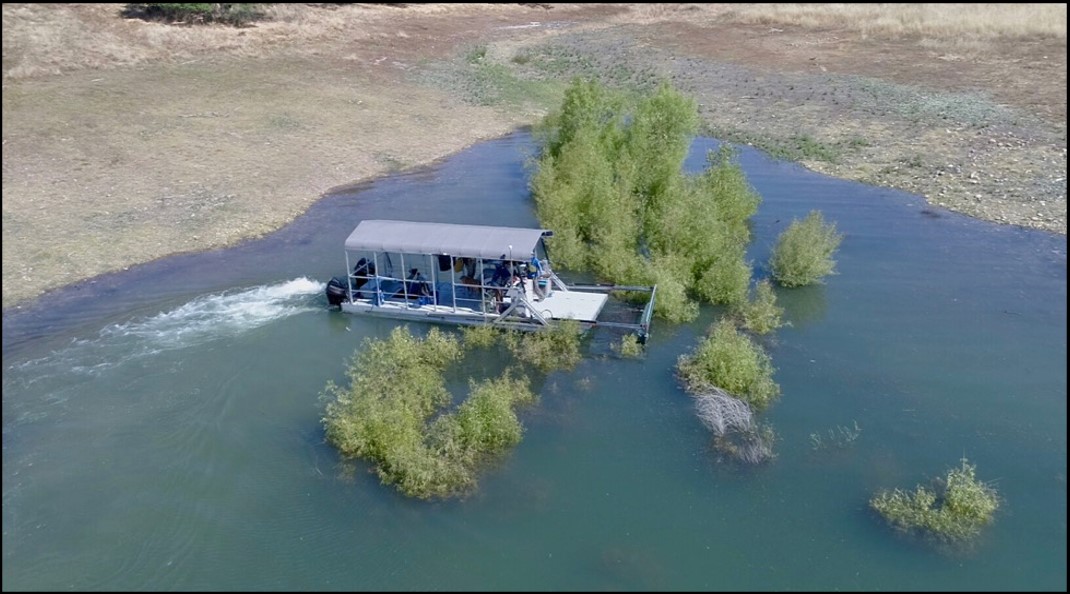
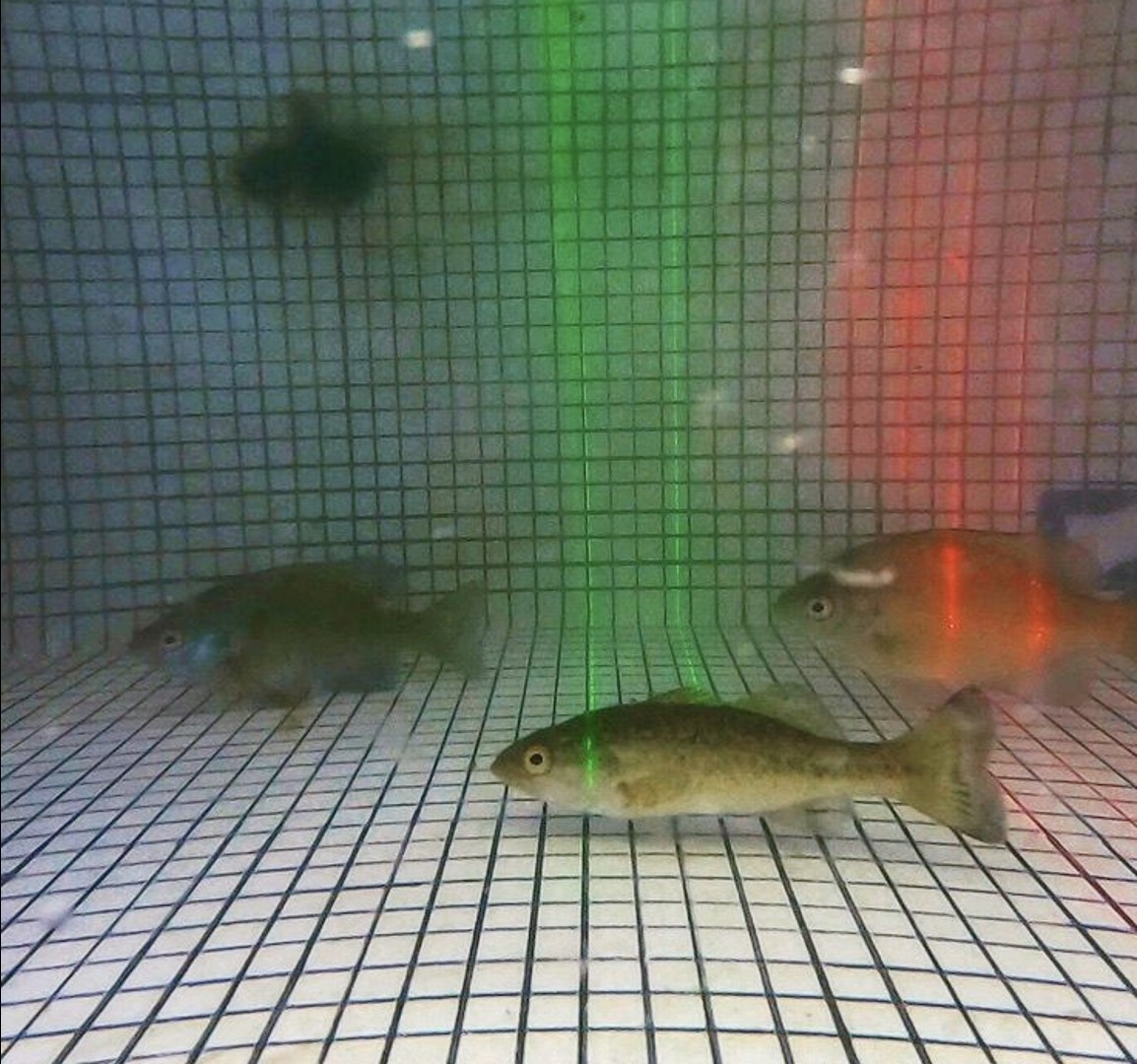
The existing 28-foot Platform will soon be augmented by a 45-foot version. Meanwhile, camera technology and artificial intelligence capabilities will continue to become better, faster and less expensive. Said Merz: “The idea here is to continuously improve on what’s already working for us.”

